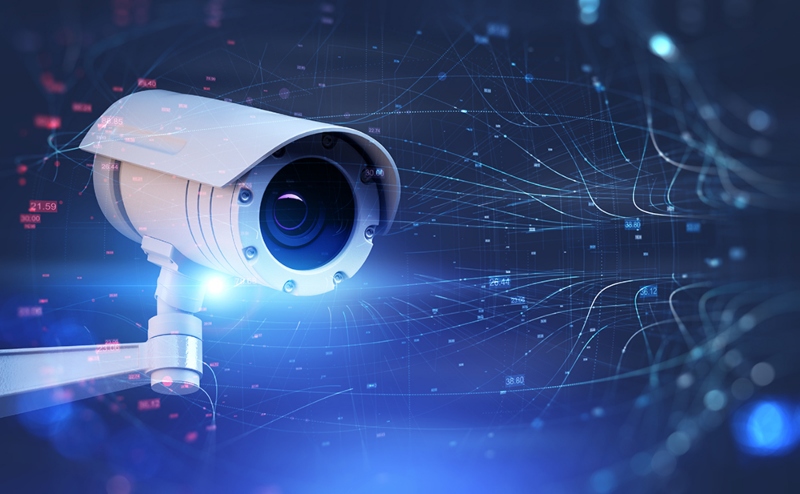A security camera is oftenly used as a source to protect ourselves and to help you choose the right one, we have summed up some information regarding its selection.
Camera Type: Analog or Digital?
Video quality largely depends on the type of camera: analog or IP (digital).
Analog cameras transmit the signal over a coaxial cable. The image obtained with such equipment has a low resolution, as well as poor clarity and sharpness due to the susceptibility of the camera to interference.
Despite this, analog cameras have a number of advantages: they are easy to set up, connect at a distance of up to 500 m, and their cost is less compared to digital ones.
Recently high-definition (AHD) analog cameras have emerged. They have a more technological filling, so the “picture” is obtained with good sharpness and resolution. At the same time, the range of the cameras is increased to 800 m.
Digital cameras (IP) encode the information received from the matrix and transmit it via wireless networks to the “cloud” or built-in memory. For this reason, only 1 cable is needed to connect all digital devices on the site, which simplifies installation. Cameras of this type are more resistant to interference, and the image from them is clear, sharp and more detailed.
Among the shortcomings, there is a high cost, as well as a limited cable length for connection: no more than 300 m. In addition, the received “image” is compressed before being sent to the “cloud”, due to which the signal transmission takes place with a delay of 2–3 s.
“Picture”: Matrix + Pixels
The video quality is directly affected by the type, size and resolution of the matrix, as well as the size of the pixels.
Typically, the following matrix types are used:
- CCD is a professional matrix for solving complex problems. With its help, a high-quality picture of a high degree of detail and good colour reproduction is obtained. However, such a matrix consumes a lot of electricity and is expensive;
- CMOS – image quality is worse than CCD, but power consumption and cost are lower. Mainly used for non-professional wired security cameras.
In addition to the type, the size of the matrix is also important: the larger it is, the better. The most popular matrices are 1/3″ and 1/4″ in size.
As for pixels, here it is not just their number that matters, but the ratio of the number of pixels to the physical size of the matrix. On a small matrix with a high resolution, the pixels will be small, which means they “catch” less light, which will negatively affect the quality of the video. At the same time, on a large matrix with the same resolution, the pixels will be larger, and the “picture” will be better.
“Capture” Space: Aperture, Zoom, Angle of View and Focus
The viewing angle determines the size of the space that the camera will cover. Based on this value and the area of the observed area, the number of necessary devices is determined. You can find cameras with any viewing angle, up to 360°.
The viewing angle directly depends on the focal length: the longer it is, the smaller the viewing angle. At the same time, it should be borne in mind that the smaller the focal length, the worse the detail. In general, you will have to find a compromise between focus and angle.
By type of camera focus are:
- Monofocal – with a fixed focal length and viewing angle;
- Varifocal – with the ability to change the focal length (automatically or manually).
In addition, the quality of the image is affected by the amount of light transmitted to the matrix. In order to “catch tons of light”, a diaphragm is provided. It is the “pupil” of the lens through which light enters the matrix.
To zoom in and out of the image, there is an optical zoom. It’s good if the device has PTZ control (pan – panorama, tilt – tilt, zoom – zoom). This option allows you to remotely point the camera at the desired location and zoom in on the image.
Important to know: Auto iris automatically adjusts the size of the light opening to improve image quality.
Noise Control: Signal/Noise, IR Illumination and Filters
Videos cannot be shot without noise, but they can be minimized with backlighting and filters.
Infra-red illumination (IR illumination) is needed for shooting at night. Special LEDs emit infrared light, which helps the matrix recognize objects even in complete darkness. The range of IR illumination varies from 10 to 80 m: the longer the range, the narrower the beam.
If at night infrared light helps the camera to see, then during the day it “blinds” it. To “restore vision”, use an IR filter, which happens:
- Mechanical – in the form of a sliding plate. In cases where there is less light, the plate moves away from the matrix, without obstructing the light rays. Suitable for indoor and outdoor 24/7 surveillance;
- Electronic – in the form of deposition on the matrix. It is considered worse than mechanical, because it is constantly present on the matrix and thereby darkens the image. You should not use a camera with such a filter for round-the-clock surveillance.
Signal-to-noise ratio is a characteristic that shows the ratio of noise and video signal amplitudes on a logarithmic scale at minimum illumination. Measured in decibels (dB). The larger this value, the less noise will appear on the video. The optimal value is 40–45 dB. Also, noise reduction systems are used to suppress interference.
Conclusion
If you want to select a CCTV camera, you can get the right one. But make sure you understand that you read it properly before selecting one.
